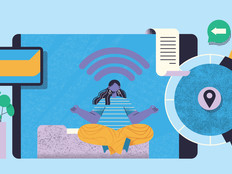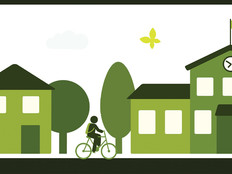1 billion+
The projected number of 5G connections worldwide by 2023
Source: 1idc.com, “IDC Forecasts Worldwide 5G Connections to Reach 1.01 Billion in 2023,” Dec. 16, 2019
Fact: 5G Offers Better Performance Than 4G
Putting all the hype and buzzwords aside, 5G truly offers much better performance than 4G. First, 5G provides much higher bandwidth — network capacity — than 4G, and 5G can support many times more devices in a physical location at once. 5G also has much lower latency, which means that the network itself causes minimal delay for communications. In other words, when you make a request, you will get a faster response with 5G.
So, what does all of that mean for you? 5G will offer speeds similar to current wired broadband. Downloads and just about any other action using networking will be much faster. 5G will also be more reliable than 4G. And because 5G can support so many more devices in a given place, it can be used not only for smartphones, tablets and other mobile devices but also for products such as laptop and desktop computers and Internet of Things devices.
Note that initially, until the rollouts of 5G technologies are completed, performance might not be as robust. Performance will depend largely on which 5G carriers are being used within a school and the state of those carriers’ 5G rollouts.
Fallacy: 4G Devices Won’t Work Once 5G Rolls Out
5G is not taking the place of 4G — at least not any time soon. There’s a huge number of existing 4G devices out there, and they’ll continue to have service for the foreseeable future. Many years from now, 4G networks will likely be retired as use of it declines, which was also true of previous generations of networks. But there’s no reason to worry that your school’s 4G devices will suddenly stop working when 5G becomes available in your area.
Also, the rollout of 5G will likely take at least several years and start in urban areas, leaving schools in rural areas lagging behind in terms of 5G support. When purchasing new devices for schools in rural areas, be sure to verify that those devices support 4G and 5G.
Fact: 5G Will Enable Innovations in Learning
5G’s performance and reliability promises to enable innovations in instruction for students physically at school and for those learning remotely. For example, 5G will allow the use of bandwidth-intensive applications like video streaming, virtual reality, augmented reality and mixed reality, making education more dynamic and captivating.
With 5G, students also can have the same learning experience no matter their location. Once it’s deployed in rural areas, 5G can provide high-speed connectivity where it previously was unavailable.
Another innovation example: In a fully 5G-enabled environment, a smart classroom can handle most of the administrative overhead that teachers usually have to deal with. For example, a classroom’s automated attendance system could track which students are in the classroom and where each is located.
5G devices could also take on many roles, such as providing textbooks and other course materials, assignments, quizzes, and tests no matter where students are. Classrooms wouldn’t need to follow traditional physical layouts anymore. Teachers will have much more time to help each individual student learn the subject matter and succeed in learning.











